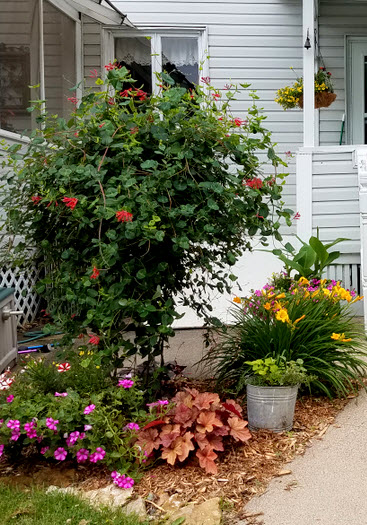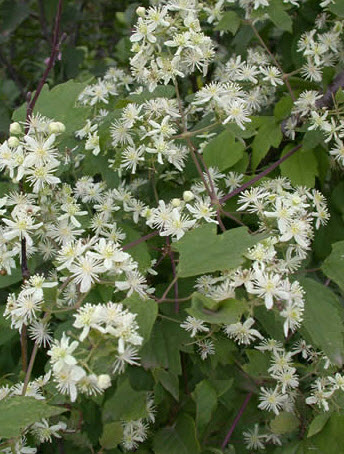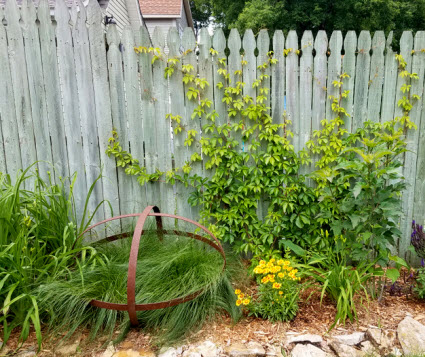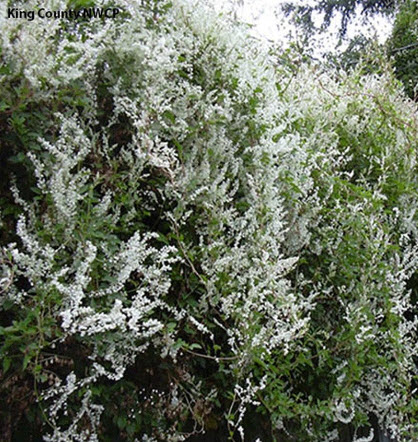Click below to listen to my Garden Bite radio show: Vines to shade
The caveat to “vines for shade”, is that they all need SOME sun. That said, here are some lovely options.
Honeysuckle vine is just lovely! I have quite a bit of it. It gets morning sun and afternoon shade.

It blooms repeatedly all summer and the hummingbirds LOVE it!
 I’ll be cutting it back in late winter!
I’ll be cutting it back in late winter!
Virgin’s Bower is a native clematis that’s been growing in another Master Gardeners garden quite nicely. It flowers from July through September and has some very interesting looking fruit. As I gathered some research on this clematis, the hardiness varies widely. I found places where it indicates a zone 2 hardiness, yet another area says zone 6. Since it is most certainly growing well in zone 4, I would venture to say we’re good throughout the state.


Dutchmans pipe is a zone 4 vine used as a screen mostly. It will grow in part shade and has huge heart shaped leaves with brownish purple pipe shaped flowers in early summer.


For fast growth and pretty, fragrant white flowers that last summer into Fall, there’s a vine called (pah LIG ah num – oh BER ee eye) or more commonly, SilverLace. It has a spread of 40 feet with the possibility of growing 25 feet in the first year alone. This one needs more sun than shade!
I just purchased a newer cultivar of Virginia Creeper called ‘Red Wall’. I love it. It’s growing very well in just weeks. I’m very much looking forward to the lovely display of red fall leaves to come! It holds on by tendrils. I’ve helped it a little and will continue to but, for the most part, it’s doing it’s own thing.

And then there’s Silver Lace …

Remember, any vine with the potential for escaping its trellis should be planted where its spread to adjacent areas can be controlled. Severe pruning at any season can be used to control that spread. In colder climates it’s not quite as rampant.
